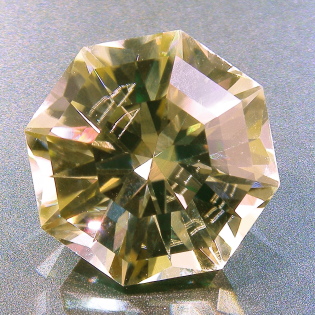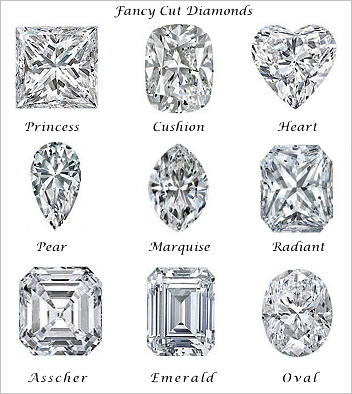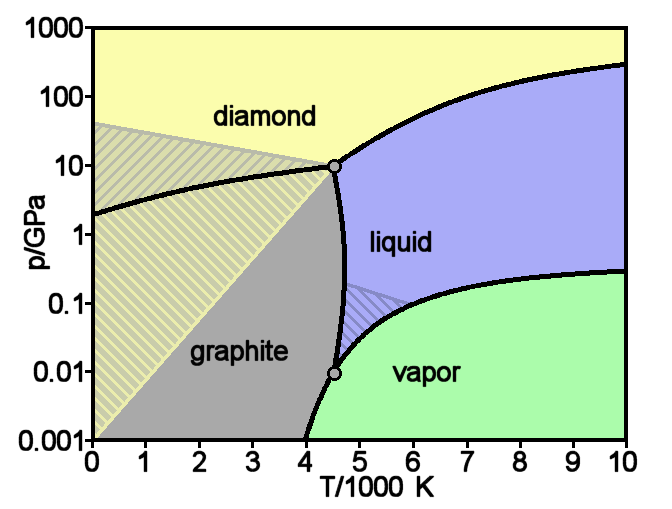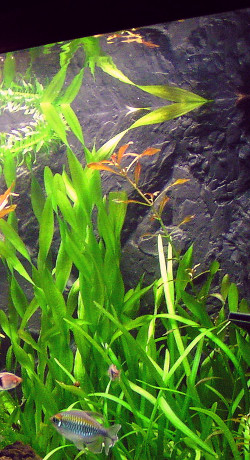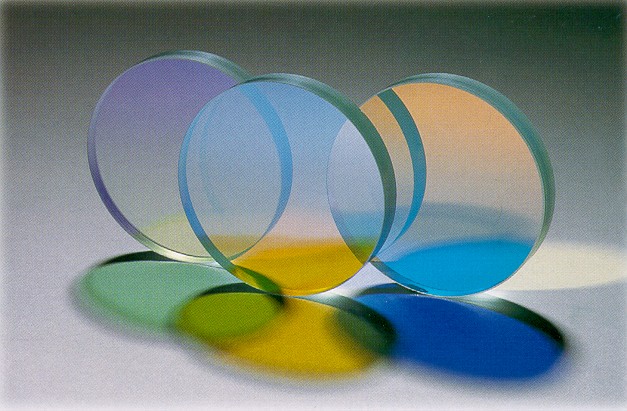|
Facet
Facets () are flat faces on geometric shapes. The organization of naturally occurring facets was key to early developments in crystallography, since they reflect the underlying symmetry of the crystal structure. Gemstones commonly have facets cut into them in order to improve their appearance by allowing them to reflect light. Facet arrangements Of the hundreds of facet arrangements that have been used, the most famous is probably the round brilliant cut, used for diamond and many colored gemstones. This first early version of what would become the modern Brilliant Cut is said to have been devised by an Italian named Peruzzi, sometime in the late 17th century.Gems, 5th edition, Webster, 1995.Gemstones of the world, Schumann, 1977. Later on, the first angles for an "ideal" cut diamond were calculated by Marcel Tolkowsky in 1919. Slight modifications have been made since then, but angles for "ideal" cut diamonds are still similar to Tolkowsky's formula. Round brilliants cut b ... [...More Info...] [...Related Items...] OR: [Wikipedia] [Google] [Baidu] |
Diamond Cuts
A diamond cut is a style or design guide used when shaping a diamond for polishing such as the brilliant cut. Cut does not refer to shape (pear, oval), but the symmetry, proportioning and polish of a diamond. The cut of a diamond greatly affects a diamond's brilliance; this means if it is cut poorly, it will be less luminous. In order to best use a diamond gemstone's material properties, a number of different diamond cuts have been developed. A diamond cut constitutes a more or less symmetrical arrangement of facets, which together modify the shape and appearance of a diamond crystal. Diamond cutters must consider several factors, such as the shape and size of the crystal, when choosing a cut. The practical history of diamond cuts can be traced back to the Middle Ages, while their theoretical basis was not developed until the turn of the 20th century. Design, creation and innovation continue to the present day: new technology—notably laser cutting and computer-aided design� ... [...More Info...] [...Related Items...] OR: [Wikipedia] [Google] [Baidu] |
Faceting Machine
A faceting machine is broadly defined as any device that allows the user to place and polish facets onto a mineral specimen. Machines can range in sophistication from primitive jamb-peg machines to highly refined, and highly expensive, commercially available machines. A major division among machines is found between those that facet diamonds and those that do not. Specialized equipment is required for diamond faceting, and faceting as an occupation rarely bridges the gap between diamond and non-diamond workmanship. A second division can be made between industrial faceting and custom/hobby faceting. The vast majority of jewelry-store gemstones are faceted either abroad in factories or entirely by machines. (Diamonds are the exception, owing to the training and specialized equipment required to facet them.) Custom jewelry is still commonly made of custom metalwork and mass-produced gemstones, but unusual cuts or particularly valuable gemstone material will likely be face ... [...More Info...] [...Related Items...] OR: [Wikipedia] [Google] [Baidu] |
Brilliant Cut
A brilliant is a diamond or other gemstone cut in a particular form with numerous facets so as to have exceptional brilliance. The shape resembles that of a cone and provides maximized light return through the top of the diamond. Even with modern techniques, the cutting and polishing of a diamond crystal always results in a dramatic loss of weight; rarely is it less than 50%. The round brilliant cut is preferred when the crystal is an octahedron, as often two stones may be cut from one such crystal. Oddly shaped crystals such as macles are more likely to be cut in a '' fancy cut''—that is, a cut other than the round brilliant—which the particular crystal shape lends itself to. Facet proportions and names The original round brilliant-cut was developed by Marcel Tolkowsky in 1919. The ideal proportions are 100% diameter, 53% table, 43.1% pavilion and 16.2% crown. The girdle and culet (if anynot part of Tolkowsky's original design) are cut from the ideal brilliant. ... [...More Info...] [...Related Items...] OR: [Wikipedia] [Google] [Baidu] |
Diamond
Diamond is a solid form of the element carbon with its atoms arranged in a crystal structure called diamond cubic. Another solid form of carbon known as graphite is the chemically stable form of carbon at room temperature and pressure, but diamond is metastable and converts to it at a negligible rate under those conditions. Diamond has the highest hardness and thermal conductivity of any natural material, properties that are used in major industrial applications such as cutting and polishing tools. They are also the reason that diamond anvil cells can subject materials to pressures found deep in the Earth. Because the arrangement of atoms in diamond is extremely rigid, few types of impurity can contaminate it (two exceptions are boron and nitrogen). Small numbers of defects or impurities (about one per million of lattice atoms) color diamond blue (boron), yellow (nitrogen), brown (defects), green (radiation exposure), purple, pink, orange, or red. Diamond also has a ... [...More Info...] [...Related Items...] OR: [Wikipedia] [Google] [Baidu] |
Diamond Powder
Diamond is a solid form of the element carbon with its atoms arranged in a crystal structure called diamond cubic. Another solid form of carbon known as graphite is the chemically stable form of carbon at room temperature and pressure, but diamond is metastable and converts to it at a negligible rate under those conditions. Diamond has the highest hardness and thermal conductivity of any natural material, properties that are used in major industrial applications such as cutting and polishing tools. They are also the reason that diamond anvil cells can subject materials to pressures found deep in the Earth. Because the arrangement of atoms in diamond is extremely rigid, few types of impurity can contaminate it (two exceptions are boron and nitrogen). Small numbers of defects or impurities (about one per million of lattice atoms) color diamond blue (boron), yellow (nitrogen), brown (defects), green (radiation exposure), purple, pink, orange, or red. Diamond also has a ver ... [...More Info...] [...Related Items...] OR: [Wikipedia] [Google] [Baidu] |
Gemstone
A gemstone (also called a fine gem, jewel, precious stone, or semiprecious stone) is a piece of mineral crystal which, in cut and polished form, is used to make jewelry or other adornments. However, certain rocks (such as lapis lazuli, opal, and obsidian) and occasionally organic materials that are not minerals (such as amber, jet, and pearl) are also used for jewelry and are therefore often considered to be gemstones as well. Most gemstones are hard, but some soft minerals are used in jewelry because of their luster or other physical properties that have aesthetic value. Rarity and notoriety are other characteristics that lend value to gemstones. Apart from jewelry, from earliest antiquity engraved gems and hardstone carvings, such as cups, were major luxury art forms. A gem expert is a gemologist, a gem maker is called a lapidarist or gemcutter; a diamond cutter is called a diamantaire. Characteristics and classification The traditional classification in the Wes ... [...More Info...] [...Related Items...] OR: [Wikipedia] [Google] [Baidu] |
Culet
{{inline, date=November 2022 In gemology, a culet is a flat face on the bottom of a gemstone. During the 14th century, after the adoption of the table cut, a further facet was added to the bottom of the cut parallel to the surface of the table. The term used for these bottom facets derives from the Latin word for bottom, ''culus''. The culet is added largely to protect the integrity of the gemstone. On a diamond, the cleavage plane runs parallel to the octahedral faces, and so any damage to the tip of the diamond could cause a split up the entire length of the pavilion. With other gemstones that are not subject to cleavage, the culet is added to protect the fragility of the pointed tip. The culet has remained optional on many diamond cuts up to the present day, and was omitted from Marcel Tolkowsky's original designs for the round brilliant A brilliant is a diamond or other gemstone cut in a particular form with numerous facets so as to have exceptional brillia ... [...More Info...] [...Related Items...] OR: [Wikipedia] [Google] [Baidu] |
Crystal
A crystal or crystalline solid is a solid material whose constituents (such as atoms, molecules, or ions) are arranged in a highly ordered microscopic structure, forming a crystal lattice that extends in all directions. In addition, macroscopic single crystals are usually identifiable by their geometrical shape, consisting of flat faces with specific, characteristic orientations. The scientific study of crystals and crystal formation is known as crystallography. The process of crystal formation via mechanisms of crystal growth is called crystallization or solidification. The word ''crystal'' derives from the Ancient Greek word (), meaning both " ice" and " rock crystal", from (), "icy cold, frost". Examples of large crystals include snowflakes, diamonds, and table salt. Most inorganic solids are not crystals but polycrystals, i.e. many microscopic crystals fused together into a single solid. Polycrystals include most metals, rocks, ceramics, and ice. A third ... [...More Info...] [...Related Items...] OR: [Wikipedia] [Google] [Baidu] |
Surface Energy
In surface science, surface free energy (also interfacial free energy or surface energy) quantifies the disruption of intermolecular bonds that occurs when a surface is created. In solid-state physics, surfaces must be intrinsically less energetically favorable than the bulk of the material (the atoms on the surface have more energy compared with the atoms in the bulk), otherwise there would be a driving force for surfaces to be created, removing the bulk of the material (see sublimation). The surface energy may therefore be defined as the excess energy at the surface of a material compared to the bulk, or it is the work required to build an area of a particular surface. Another way to view the surface energy is to relate it to the work required to cut a bulk sample, creating two surfaces. There is "excess energy" as a result of the now-incomplete, unrealized bonding at the two surfaces. Cutting a solid body into pieces disrupts its bonds and increases the surface area, and t ... [...More Info...] [...Related Items...] OR: [Wikipedia] [Google] [Baidu] |
Total Internal Reflection
Total internal reflection (TIR) is the optical phenomenon in which waves arriving at the interface (boundary) from one medium to another (e.g., from water to air) are not refracted into the second ("external") medium, but completely reflected back into the first ("internal") medium. It occurs when the second medium has a higher wave speed (i.e., lower refractive index) than the first, and the waves are incident at a sufficiently oblique angle on the interface. For example, the water-to-air surface in a typical fish tank, when viewed obliquely from below, reflects the underwater scene like a mirror with no loss of brightness (Fig.1). TIR occurs not only with electromagnetic waves such as light and microwaves, but also with other types of waves, including sound and water waves. If the waves are capable of forming a narrow beam (Fig.2), the reflection tends to be described in terms of " rays" rather than waves; in a medium whose properties are independent of direction, such as ... [...More Info...] [...Related Items...] OR: [Wikipedia] [Google] [Baidu] |
Transparency And Translucency
In the field of optics, transparency (also called pellucidity or diaphaneity) is the physical property of allowing light to pass through the material without appreciable scattering of light. On a macroscopic scale (one in which the dimensions are much larger than the wavelengths of the photons in question), the photons can be said to follow Snell's law. Translucency (also called translucence or translucidity) allows light to pass through, but does not necessarily (again, on the macroscopic scale) follow Snell's law; the photons can be scattered at either of the two interfaces, or internally, where there is a change in index of refraction. In other words, a translucent material is made up of components with different indices of refraction. A transparent material is made up of components with a uniform index of refraction. Transparent materials appear clear, with the overall appearance of one color, or any combination leading up to a brilliant spectrum of every color. The opposi ... [...More Info...] [...Related Items...] OR: [Wikipedia] [Google] [Baidu] |
Jamb Peg
A jamb (from French ''jambe'', "leg"), in architecture, is the side-post or lining of a doorway or other aperture. The jambs of a window outside the frame are called “reveals.” Small shafts to doors and windows with caps and bases are known as “jamb-shafts”; when in the inside arris of the jamb of a window, they are sometimes called "scoinsons." A doorjamb, door jamb (also sometimes doorpost) is the vertical portion of the door frame onto which a door is secured. The jamb bears the weight of the door through its hinges, and most types of door latches and deadbolts extend into a recess in the doorjamb when engaged, making the accuracy of the plumb (i.e. true vertical) and strength of the doorjambs vitally important to the overall operational durability and security of the door. The word ''jamb'' is also used to describe a wing of a building, perhaps just in Scottish architecture. John Adam added a 'jamb' to the old Leith Customs house in the Citadel of Leith in 1754– ... [...More Info...] [...Related Items...] OR: [Wikipedia] [Google] [Baidu] |
